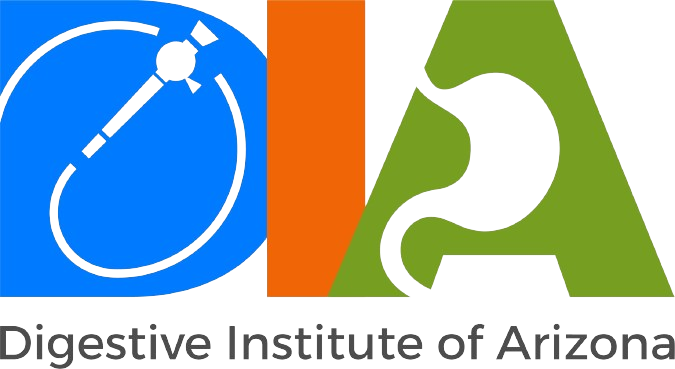Esophagogastroduodenoscopy (EGD) Test in Arizona
- Home /
- Esophagogastroduodenoscopy

EGD Test in Phoenix, AZ for Best Diagnosis for Upper GI Issues
Esophagogastroduodenoscopy (EGD) At The Digestive Institute Of Arizona
The Digestive Institute of Arizona provides esophagogastroduodenoscopies (EGD), popularly known as upper endoscopy, that diagnose and treat a variety of afflictions affecting the upper digestive tract. Our experienced gastroenterologists at the clinic in Phoenix and Gilbert, AZ, utilize this minimally invasive EGD procedure to perform thorough examinations, including EGD scans, to assess the walls of your esophagus, stomach, and the first part of your small bowel (called the duodenum).
If you are experiencing digestive discomfort or need an EGD test or scan, our skilled team is here to help. Schedule your appointment today to receive expert digestive care with EGD exam and regain control of your digestive health.


What is EGD Procedure?
An EGD test requires the use of an endoscope, a slim, flexible tube with a camera, and an illumination system. The doctor will introduce the endoscope through your mouth gently, guiding it down the esophagus into your stomach and duodenum. By transmitting real-time pictures from inside your alimentary canal to our monitor, your doctor can analyze its lining for any signs of abnormality.
Why is an EGD Performed?
EGD is a valuable test of diagnosis that helps to study different types of upper digestive symptoms such as:
- Chronic heartburn or indigestion
- Dysphagia
- Unexplained nausea or vomiting
- Persistent abdominal pain
- Unexplained weight loss
- Hematemesis
- Iron deficiency
- Suspected ulcers
- Celiac disease
- Esophageal varices (enlarged veins in the esophagus)
- Esophagitis (inflammation of the esophagus)
- Gastritis (inflammation of the stomach)
During an upper endoscopy procedure, other treatments can be performed by the physician:
- Biopsy: This involves the removal of a little piece of tissue from your body that is then examined under a microscope to reveal any existing conditions such as ulcers or celiac disease.
- Stopping bleeding: This includes applying clips or injecting medications to control bleeding ulcers or esophageal varices.
- Dilating narrow passages: This involves stretching the areas of the esophagus and pylorus (the stomach outlet) so that food can pass through easily.
What to Expect During an EGD Test at Digestive Institute of Arizona?
Most commonly, an EGD is done as an outpatient procedure. Here are the things you should know:
Before the process
You will be requested to abstain from eating for several hours before your EGD scan. Additionally, there may be some medications that you should not take before the operation. Your doctor will explain the risks and advantages of this process and ask for your consent.
During the process
You will have an intravenous (IV) line inserted in your arm to provide you with medication that will help you relax. Your doctor may spray or numb your throat with a tablet. The endoscope is then smoothly inserted into your mouth. Some people may feel nausea or pain, but it takes seconds for such sensations to cease. This operation usually lasts about 15-30 minutes.
After the process
You will be monitored for a short time while recovering from anesthesia in a recovery area. Some might experience mild cramping or get a sore throat for some time only. As soon as you regain full consciousness and remain alert, you can typically continue with your usual diet and activity level.
Benefits of EGD Test
There are several benefits of EGD:
- Non-invasive: It is a less invasive form of exploratory surgery.
- Ambulatory procedure: It is possible to be discharged the same day as the procedure.
- Correct diagnosis: This procedure allows direct visualization of the upper gut for correct diagnosis.
Risks of EGD Test
Even though EGD is generally safe, the procedure has potential risks, as with any medical process. They include:
- Bleeding: A biopsy may cause minor bleeding.
- Infection: There is a slight possibility of the insertion point getting infected.
- Reaction to medication: You might have a reaction from using sedative medicine.
- Perforation: Sometimes, the endoscope can tear in the esophagus, stomach, or duodenum’s lining.
Frequently Asked Questions About EGD
Although EGD is often not painful, some patients may feel mildly uncomfortable or have a sensation of choking during the examination. This discomfort can be reduced by using sedation or anesthesia; therefore, most patients do not recall the procedure.
EGD is regarded as safe, but just like any medical process, it comes with some risks, such as bleeding, perforation of the digestive tract, adverse reaction to sedation, or infection. Your gastroenterologist will discuss these risks with you before the procedure and take adequate precautions to reduce their possibility.
Patients can resume typical habits such as eating and drinking soon after the procedure. Nonetheless, you may need someone to accompany you home since sedatives may continue affecting you for several hours afterward. Your doctor will give you specific directions based on your case.
An EGD test is used to diagnose conditions affecting the upper digestive tract, including acid reflux, ulcers, esophagitis, gastritis, and abnormal growths. It helps detect inflammation, bleeding, infections, or other abnormalities that may be causing digestive discomfort.
